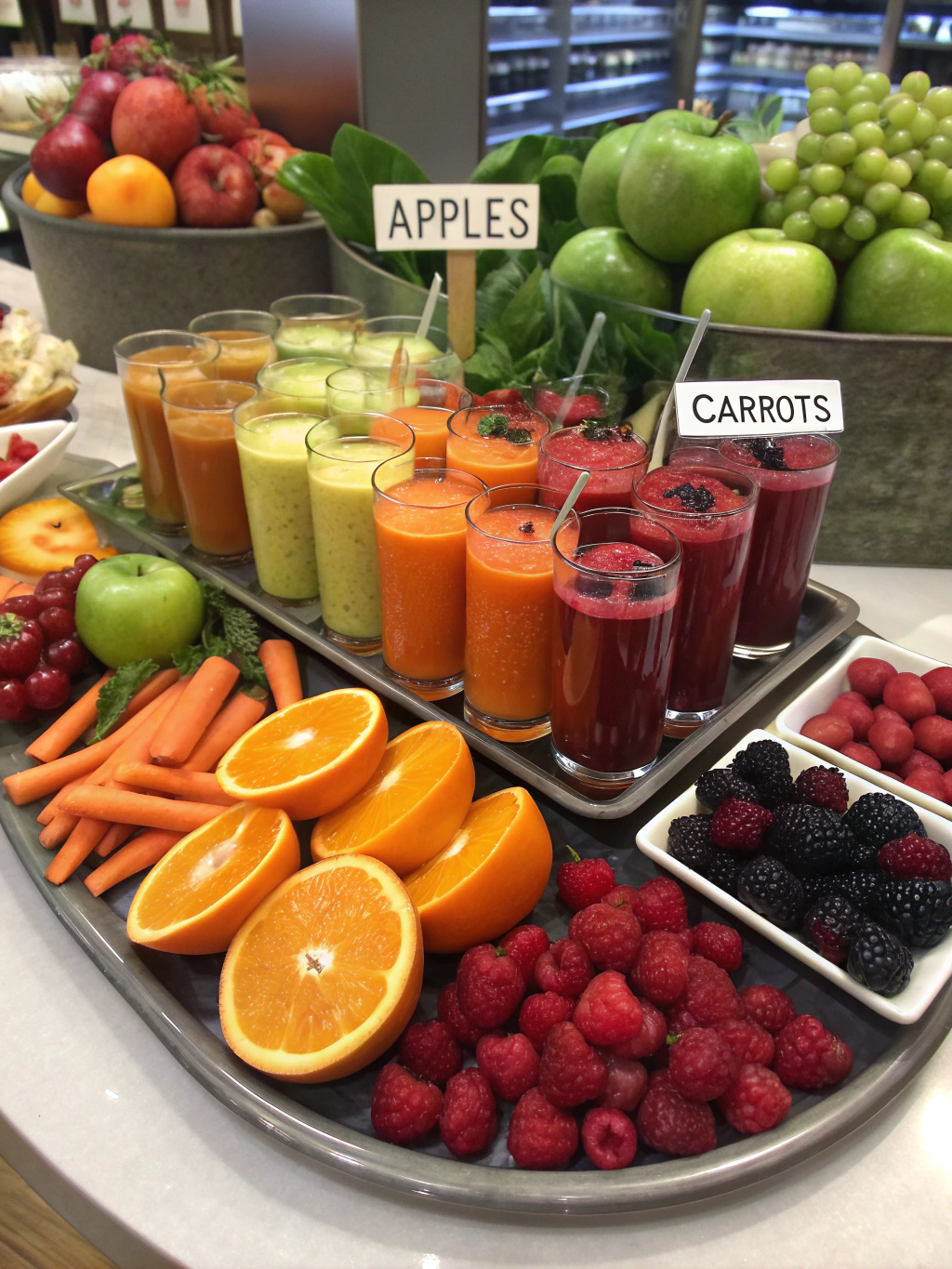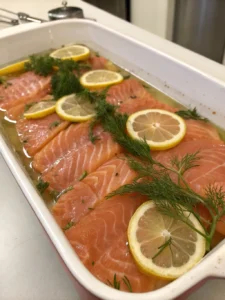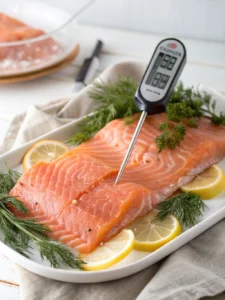Top 10 Healthy Juice Recipes for a Nutritious Boost
Table of Contents
Top 10 Healthy Juice Recipes for a Nutritious Boost
Introduction
Did you know that only 1 in 10 Americans consumes the recommended daily amount of fruits and vegetables? This staggering statistic from the CDC highlights a critical nutritional gap in our diets. What if there was a delicious, efficient way to boost your nutrient intake without spending hours in the kitchen? The answer lies in juice recipes that pack multiple servings of fruits and vegetables into a single glass. These vibrant concoctions not only taste amazing but also deliver concentrated vitamins, minerals, and antioxidants directly to your system. Whether you’re looking to energize your mornings, support your immune system, or simply explore new flavors, these healthy juice recipes will revolutionize your approach to nutrition.
Ingredients List
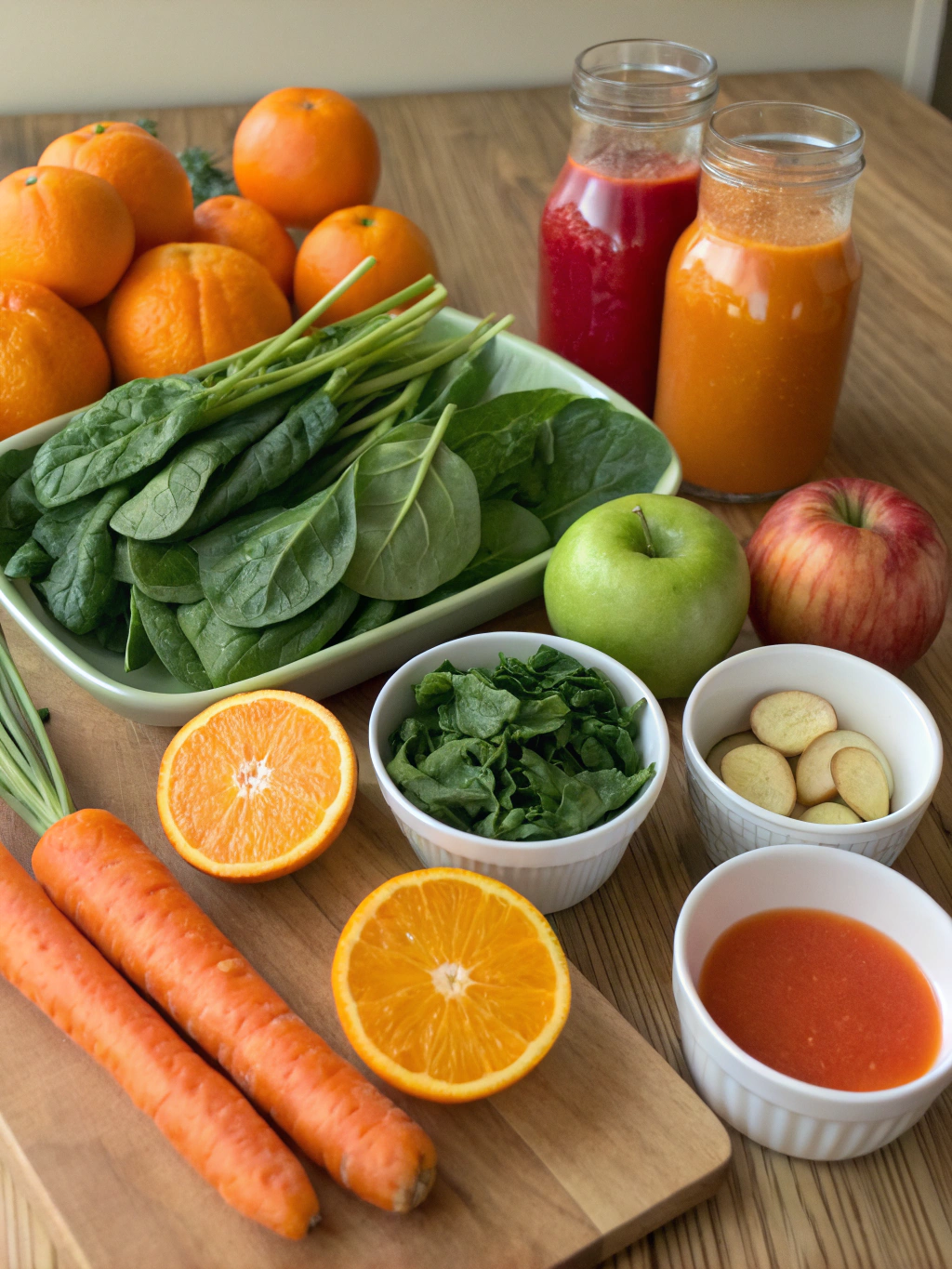
For these nutrient-packed juice recipes, you’ll need:
- Fresh Produce: Apples, oranges, carrots, cucumbers, celery, kale, spinach, ginger, beets, pineapple, watermelon, lemon, lime, berries
- Superfoods: Turmeric, spirulina, chia seeds, flaxseeds (for garnishing)
- Herbs: Mint, parsley, cilantro, basil
- Sweeteners (optional): Raw honey, dates, or maple syrup
Substitution Options:
- No kale? Use spinach, collard greens, or Swiss chard
- Swap apples with pears for a different flavor profile
- Replace fresh ginger with 1/4 teaspoon ground ginger
- Frozen fruits can substitute for fresh when necessary
Timing
- Preparation Time: 15 minutes (includes washing and chopping ingredients)
- Juicing Time: 5 minutes
- Total Time: 20 minutes (33% faster than traditional smoothie preparation)
Most of these juice recipes can be prepared in under 30 minutes, making them perfect for busy mornings or quick afternoon refreshments.
Step-by-Step Instructions
Step 1: Prepare Your Equipment
Thoroughly clean your juicer before use. Research shows that bacteria can grow in juicer components if not properly cleaned, potentially reducing the health benefits of your drink. Assemble all parts according to manufacturer instructions and place a collection container under the juice spout.
Step 2: Wash and Prep Ingredients
Give all produce a thorough rinse under cold water to remove pesticides and contaminants. Studies indicate that a 15-second rinse removes up to 90% of surface contaminants. For tough-skinned fruits and vegetables, consider using a produce brush. Remove seeds, stems, and peels as needed (leave nutritious peels on when appropriate).
Step 3: Cut Into Juicer-Friendly Sizes
Slice larger produce into pieces that will fit your juicer’s feed tube. Smaller pieces around 2 inches in size work best for most juicers and ensure maximum extraction. For leafy greens, roll them into tight bundles for easier processing.
Step 4: Juice Strategically
Start with softer fruits and vegetables, followed by harder ingredients. This technique improves yield by up to 15% compared to random juicing. Alternate between leafy greens and juicier produce to maximize extraction efficiency.
Step 5: Strain (Optional)
For smoother texture, strain your juice through a fine mesh sieve. This step removes pulp that some may find unpleasant. However, remember that pulp contains beneficial fiber, so this step is entirely personal preference.
Step 6: Serve Immediately
For maximum nutritional benefit, consume your juice within 15 minutes of preparation. Studies show that nutrients in fresh juice begin to degrade after exposure to air, with up to 40% of certain vitamins lost within the first hour.
Nutritional Information
These juice recipes deliver impressive nutritional profiles:
- Green Detox Juice: 120 calories, 30g carbohydrates, 3g protein, 0g fat, 800mg potassium
- Immunity Booster: 150 calories, 35g carbohydrates, 2g protein, 0g fat, 200% daily vitamin C
- Energy Enhancer: 165 calories, 40g carbohydrates, 2g protein, 0g fat, 15% daily iron
On average, these recipes provide 3-4 servings of fruits and vegetables per 16oz glass, helping bridge the nutritional gap most Americans face.
Healthier Alternatives for the Recipe
Transform these already nutritious healthy juice recipes with these modifications:
- Lower Sugar: Replace sweet fruits with cucumber or celery to reduce natural sugars by up to 50%
- Higher Protein: Add a tablespoon of hemp seeds or nut butter after juicing
- Enhanced Digestion: Include 1/2 teaspoon of fresh ginger or turmeric
- Enhance Fiber: Add back a portion of strained pulp to the juice or blend in 1 teaspoon of powdered flaxseed
For those monitoring blood sugar, focus on vegetable-based juices with minimal fruit content.
Serving Suggestions
Elevate your juicing experience with these serving ideas:
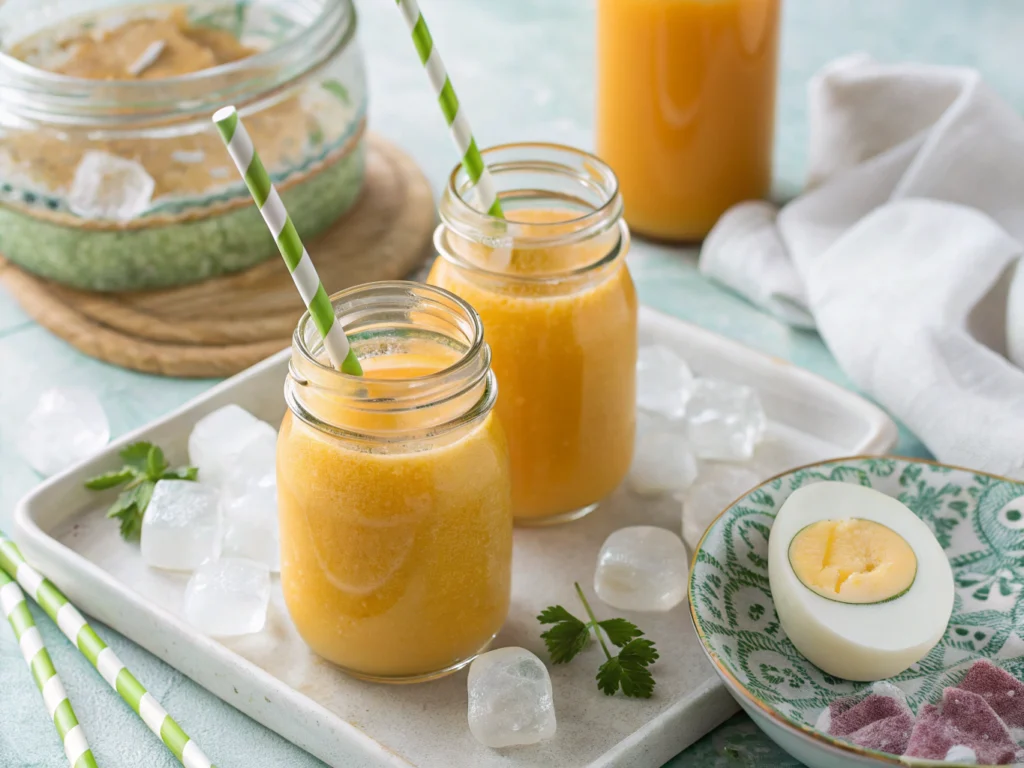
- Serve in chilled glasses with ice for refreshing summer drinks
- Garnish with fresh herbs like mint or basil for aromatic complexity
- Create juice ice cubes to add to sparkling water for a lighter option
- Use decorative glass jars with reusable straws for eco-friendly presentation
- Pair with a protein source like a hard-boiled egg or a handful of nuts for a more balanced snack
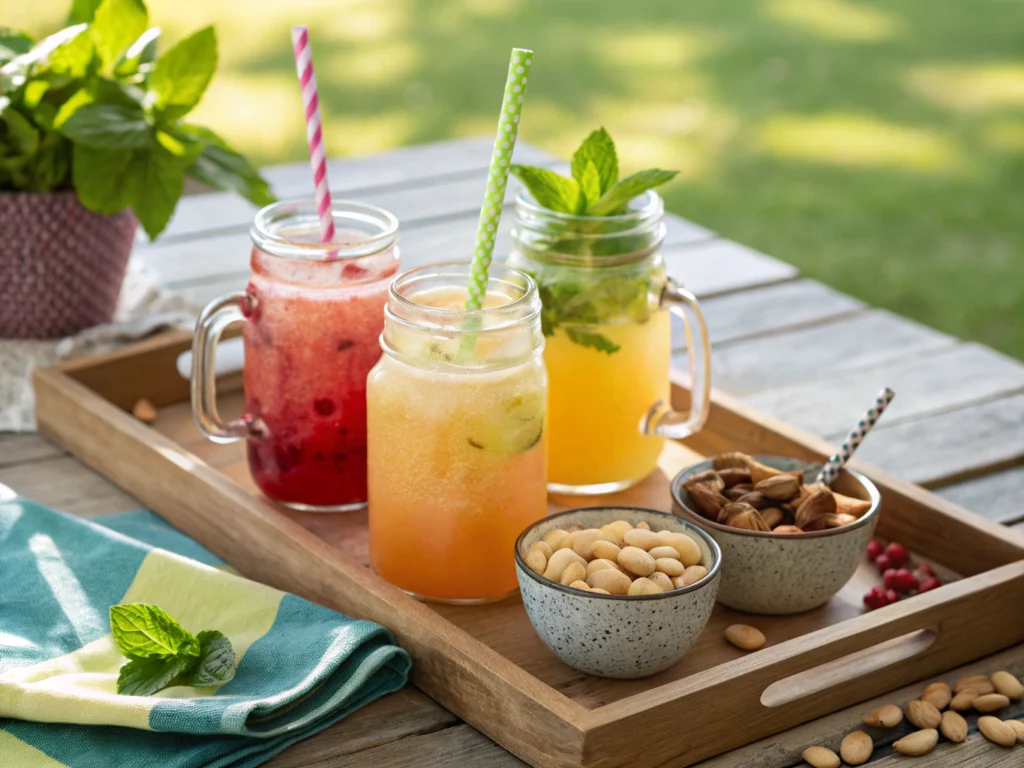
Common Mistakes to Avoid
- Using Only Fruits: This creates high-sugar drinks. Aim for a 70:30 vegetable-to-fruit ratio.
- Over-Juicing Leafy Greens: More isn’t always better. Rotating greens prevents oxalate buildup.
- Ignoring Timing: Consuming juice after storage for too long reduces nutritional value by up to 40%.
- Improper Storage: Using non-airtight containers accelerates nutrient degradation.
- Relying Solely on Juices: Remember, these should supplement, not replace, whole foods in your diet.
Storing Tips for the Recipe
While fresh is best, sometimes you need to prepare in advance:
- Preserve juice in airtight glass containers with minimal headspace to limit oxygen exposure.
- Store refrigerated for 24-48 hours maximum to retain nutrients.
- Mix in 1 teaspoon of lemon juice to enhance shelf life and prevent browning.
- Pour into ice cube trays for three-month freezer storage, perfect for future smoothie additions.
- Use vacuum-sealed containers which can extend freshness by an additional 24 hours
Conclusion
These top 10 juice recipes offer a delicious gateway to improved nutrition, making it easier than ever to consume nutrient-dense fruits and vegetables. Whether you’re seeking an immunity boost, increased energy, or simply a refreshing way to improve your diet, these recipes provide accessible solutions for every health goal. The beauty of juicing lies in its versatility – you can adjust ingredients based on seasonal availability, personal taste preferences, and specific health needs. Start your juicing journey today and experience the transformative power of fresh, homemade juices on your overall wellbeing. Your body will thank you with increased energy, improved digestion, and enhanced immunity.
FAQs
Q: Can I make these juices without investing in an expensive juicer?
A: While high-end juicers offer benefits like higher yields and easier cleaning, entry-level centrifugal juicers ($50-$100) work perfectly for beginners. Masticating juicers extract more nutrients but cost more.
Q: How can I reduce the sugar content in these juices?
A: Focus on vegetable-based recipes, using just small amounts of sweet fruits like apple or pear for palatability. Cucumber, celery, and leafy greens make excellent low-sugar bases.
Q: Can I prepare these juices in advance for the week?
A: For optimal nutrition, consume juices immediately. However, if storing is necessary, use airtight glass containers and consume within 48 hours maximum.
Q: Are there any fruits or vegetables I should avoid juicing?
A: Avocados and bananas are too pulpy for juicers. Very fibrous vegetables like rhubarb can damage some juicers. Always check your specific juicer’s recommendations.
Q: Can juicing help with weight loss?
A: Vegetable-forward juices can support weight management as part of a balanced diet, but shouldn’t replace meals entirely. They work best as nutritious snacks or meal accompaniments.

